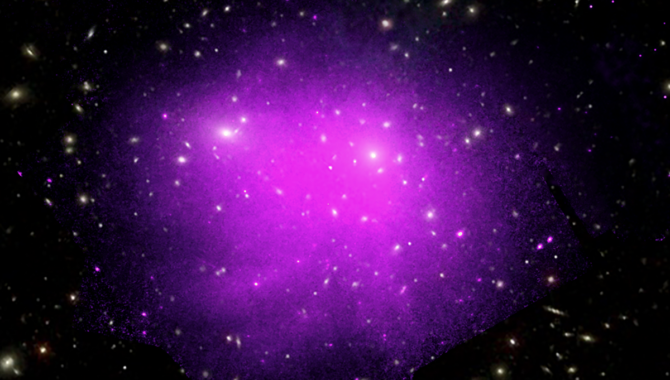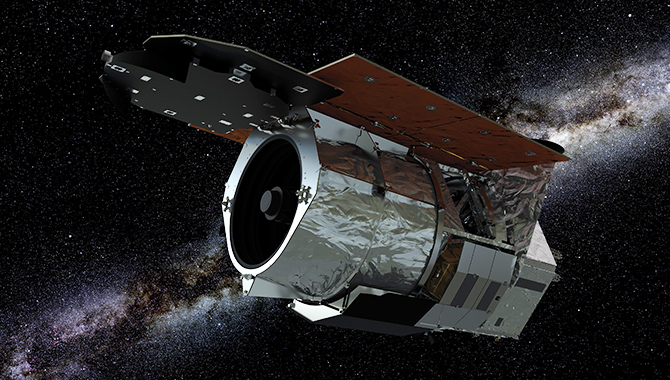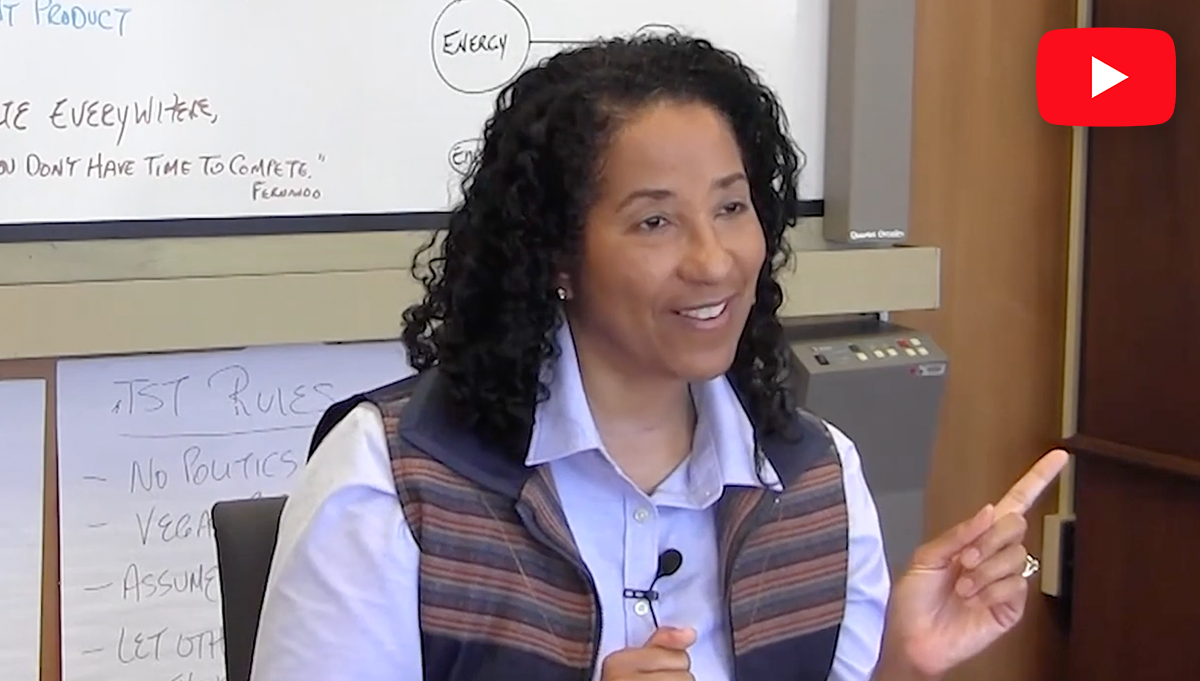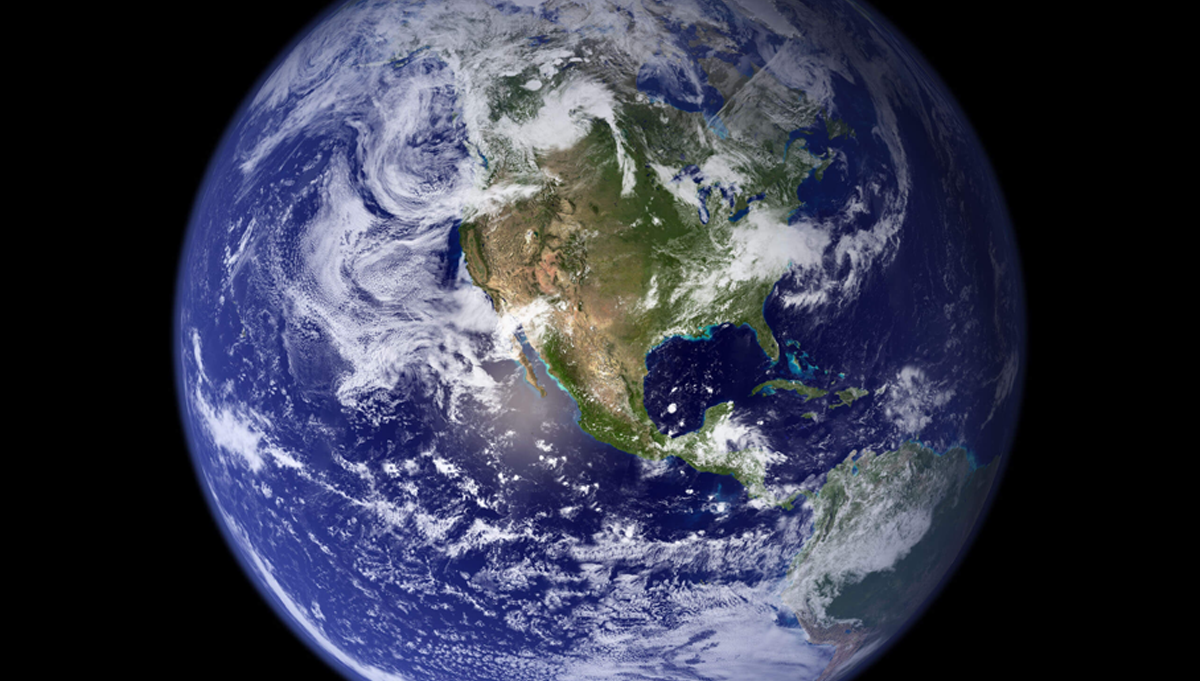
In the early 1930s, astrophysicist Fritz Zwicky studied the Coma Cluster—shown here in an image obtained by NASA’s Chandra X-ray Observatory—and discovered a puzzling inconsistency that led him to theorize the presence of dark matter.
Photo Credit: NASA
New telescopes designed to address pressing mysteries in astrophysics.
In the early 1930s, Swiss astrophysicist Fritz Zwicky was working at the Mount Wilson Observatory west of Los Angeles in the picturesque San Gabriel Mountains. Mount Wilson was already an important observatory before the 100-inch Hooker Telescope was completed in 1917. In the years that followed, the largest telescope in the world revolutionized scientific understanding of the Universe, providing answers to questions astronomers were asking for centuries. Astronomer Edwin Hubble famously found evidence that there were other galaxies far outside the Milky Way, and that this vast universe of galaxies was expanding. Now it was Zwicky who was poised to make a momentous observation.
The Coma Cluster is a sprawling area of space nearly 20 million light-years in diameter and about 300 million light-years from Earth. It is filled with more than 1,000 galaxies, each containing billions of stars. Studying the cluster, Zwicky found a puzzling inconsistency. Seven of the galaxies were moving much faster than expected. So fast, in fact, the cluster should be pulling apart if visible matter was the only source of gravity.
In 1933, Zwicky published “The Redshift of Extragalactic Nebulae” in the journal Helvetica Physica Acta. In the paper he noted: “…the large velocity dispersion in the Coma system (and other dense clusters of nebulae) holds an unsolved problem.” He theorized there was an unobserved type of mass holding the cluster together. He called it dark matter. Decades later, in the 1970s, American astronomer Vera Rubin found compelling evidence for dark matter when investigating the rotation of individual spiral galaxies. She and colleague Kent Ford found that stars at the edges of these galaxies were moving at velocities nearly the same as stars near the center, contrary to the expectations of Newtonian physics. These flat rotational curves could be explained by dark matter.
In the decades since 1933, the portion of the Universe scientists believe to be dark matter has grown smaller but remains significant. Current estimates are that dark matter accounts for about 27 percent of the Universe. The bulk of the Universe, about 68 percent, is dark energy, a mysterious force that would explain observations that the expansion of the universe is accelerating. All that humans perceive—ordinary matter—is just 5 percent.

Technicians with the manufacturer Thales Alenia Space work with the structural and thermal model of the Euclid telescope at their facility in Cannes, France.
Photo Credits: NASA/JPL-CaltechESA/Thales Alenia Space/Airbus Defence and Space
On July 1, a Space X Falcon 9 launched from Cape Canaveral Space Force Station carrying a new space telescope developed by the European Space Agency (ESA)—with contributions from NASA. Euclid was developed to return data that could shed new light on dark matter and dark energy by creating a detailed map of roughly one third of the sky, documenting billions of galaxies, some as much as 10 billion light-years away, and others that are closer, noting the galaxies’ positions and velocities.
The spacecraft is nearly 4.5 meters tall and more than 3.1 meters in diameter. Euclid carries a suite of instruments, including a Korsch telescope which sends light through a series of corrective mirrors to eliminate optical aberrations. The telescope’s mirrors and support structures are silicon carbide, a high-performance material chosen for its excellent thermo-elasticity, stiffness, and ability to withstand radiation. Euclid includes a large format, visible-light camera and a near-infrared spectrometer and photometer to note the redshift of distant galaxies.
Near the end of July, Euclid will reach the second LaGrange point where the gravitational forces of the Sun and Earth and the orbital motion of Euclid will balance. Once it establishes orbit there, mission controllers will begin two months of testing and calibrating the telescope and scientific instruments. Euclid’s primary mission will span six years. Scientists are eager to begin addressing some of the most pressing mysteries in astrophysics with an instrument of such precision.
“If we want to understand the Universe we live in, we need to uncover the nature of dark matter and dark energy and understand the role they played in shaping our cosmos,” said Carole Mundell, ESA’s Director of Science, in an ESA press release. “To address these fundamental questions, Euclid will deliver the most detailed map of the extra-galactic sky. This inestimable wealth of data will also enable the scientific community to investigate many other aspects of astronomy, for many years to come.”

The Euclid space telescope travels through space in this artist’s illustration.
Illustration Credit: ESA/C. Carreau
As early as 2027, Euclid will be joined in space by NASA’s Nancy Grace Roman Space Telescope, also designed to study the Universe’s accelerating expansion. The Roman Space Telescope will observe a smaller area—one-twentieth of the sky—but in greater detail and likely within the greater area Euclid surveyed.
“Together, Euclid and Roman will add up to much more than the sum of their parts,” said Yun Wang, a senior research scientist at Caltech/IPAC in Pasadena, California, in a NASA press release. Wang has led galaxy clustering science groups for both Euclid and Roman. “Combining their observations will give astronomers a better sense of what’s actually going on in the universe.”
To learn more about Euclid, click here. To learn more about the Nancy Grace Roman Space Telescope, click here.









